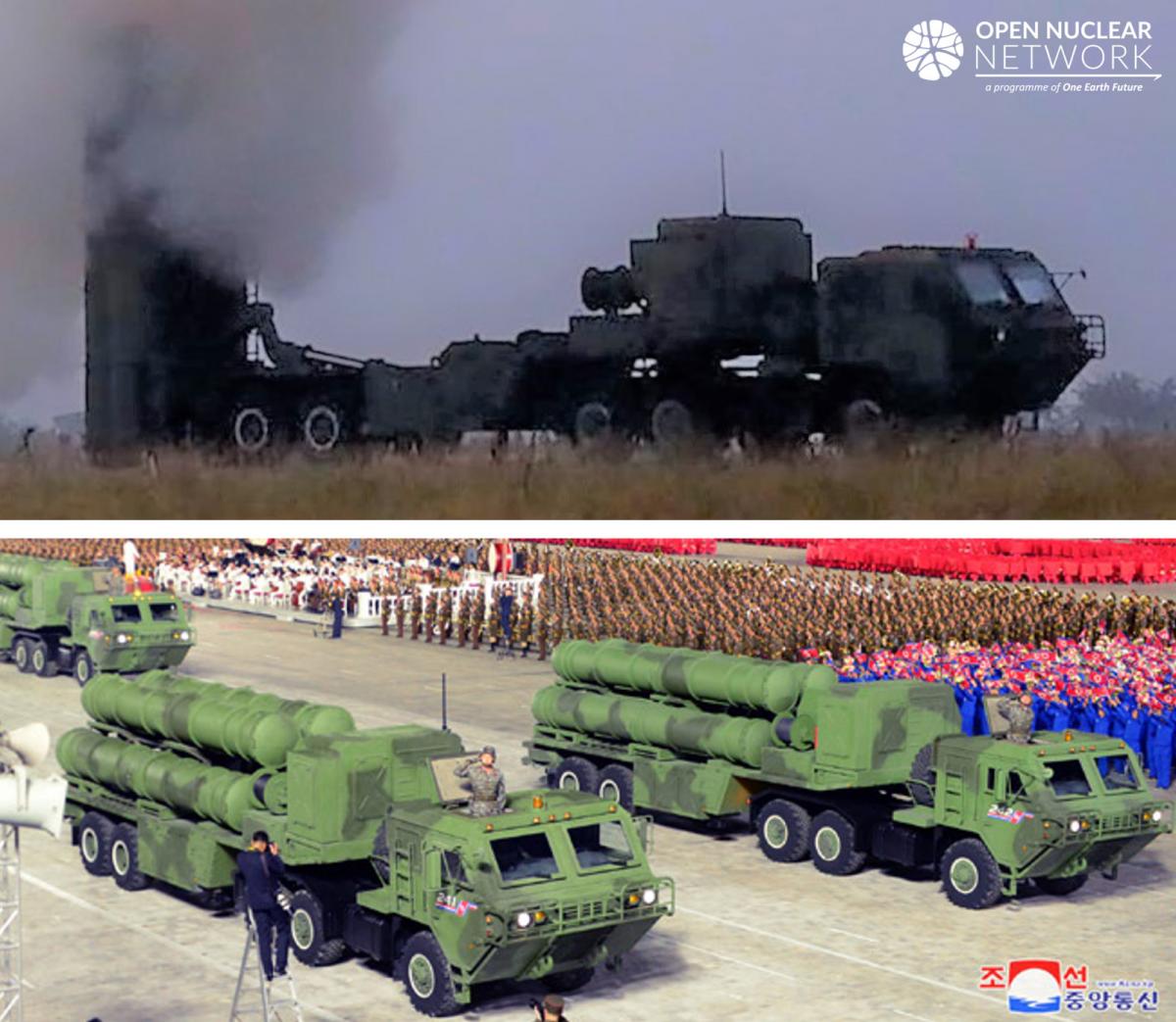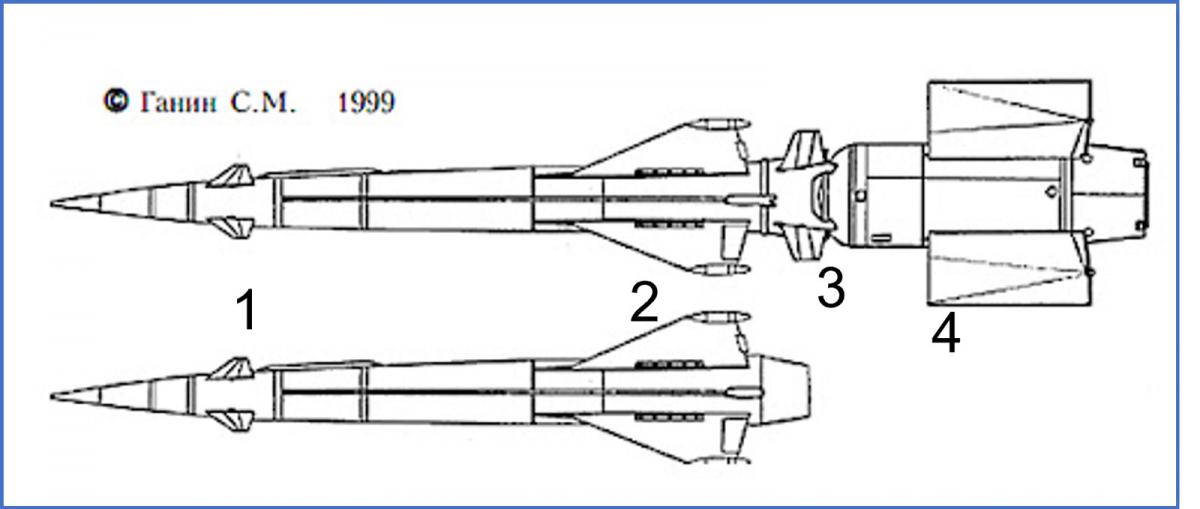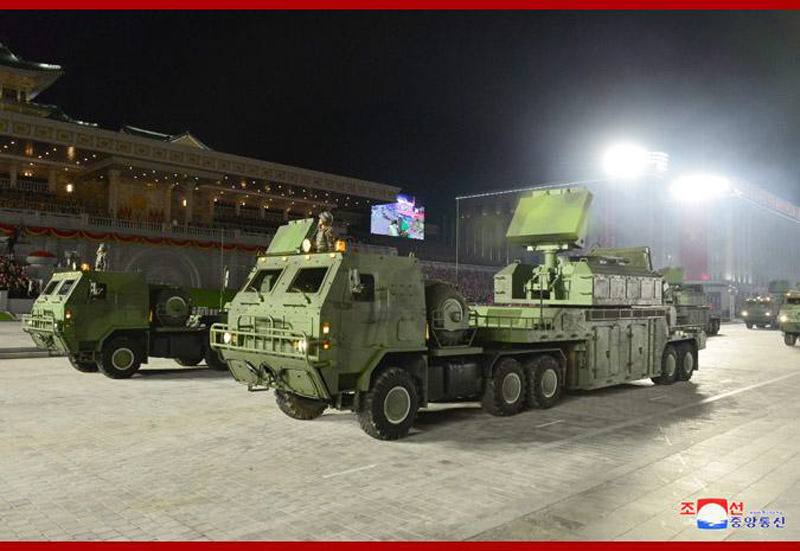
On 1 October 2021, the Korean Central News Agency (KCNA) of the Democratic People’s Republic of Korea (DPRK) reported that the Academy of Defence Science tested a newly developed anti-aircraft missile (see Attachment). The test, which took place on 30 September, also marked the fourth missile test of the DPRK within the same month.
Conclusions: This new missile is important because, if deployed, it could better protect the nuclear-capable ballistic and cruise missiles which are a critical part of the Strategic Force of the Korean People’s Army (KPA) (as well as other strategic locations and assets, such as leadership headquarters and nuclear facilities). In the event of a military conflict, the survival of the KPA’s Strategic Force will rely on ensuring the concealment and mobility of such missile units (both equipment and personnel), while providing protection against aerial attack. Given that the KPA’s fighter jets have become obsolete, developments in the DPRK’s anti-aircraft missiles are worth paying close attention to.
On 1 October 2021, the Korean Central News Agency (KCNA) of the Democratic People’s Republic of Korea (DPRK) reported that the Academy of Defence Science tested a newly developed anti-aircraft missile (see Attachment).1 The test, which took place on 30 September, also marked the fourth missile test of the DPRK within the same month.2
This new missile is important because, if deployed, it could better protect the nuclear-capable ballistic and cruise missiles which are a critical part of the Strategic Force of the Korean People’s Army (KPA) (as well as other strategic locations and assets, such as leadership headquarters and nuclear facilities). In the event of a military conflict, the survival of the KPA’s Strategic Force will rely on ensuring the concealment and mobility of such missile units (both equipment and personnel), while providing protection against aerial attack. Given that the KPA’s fighter jets have become obsolete,3 developments in the DPRK’s anti-aircraft missiles are worth paying close attention to.
Below are some initial observations based on the information released by KCNA.
- The vehicle used to launch the anti-aircraft missile is the same type of vehicle as those that appeared in the DPRK’s military parades on 10 October 2020 and 14 January 2021. It consists of a three-axle truck and a two-axle trailer that carries four large launch canisters (Figure 1).

Figure 1. Comparison of the vehicle used in the 30 September test (top, flipped and enhanced for comparison) with those showcased during the 10 October 2020 parade (bottom). Images: KCNA
- The KCNA text stated that the missile’s reaction time, accuracy and range had been significantly improved through new technologies such as what it referred to as “twin-rudder control” (see Attachment). It is not immediately clear what “twin-rudder control” means. However, there seems to be a similarity in the layout of the aerodynamic surfaces (wings and fins) in the newly developed missile (Figure 2) and the Soviet S-125 anti-aircraft missile (Figure 3), which has been operated by the KPA since the mid-1980s.4

Figure 2. Layout of the newly developed anti-aircraft missile. Based on the image provided by KCNA, the missile is a solid propellant, two stage missile. Image: KCNA, annotated by ONN

Figure 3. Image of S-125 showing four fins at the tip (marked as 1) which are used to control pitch and yaw.5 A pair of ailerons on two of the four cruciform wings (marked as 2) are used for roll control. The adapter section between the missile and its booster has a pair of destabilising fins (marked as 3) designed to prevent the booster (marked as 4) from colliding with the separated missile.6 Image: Nevsky Bastion7
- If the layout of the aerodynamic surfaces is indeed similar to that of the Soviet S-125, it would mean that the DPRK has adopted a mature, practical and realistic approach to developing its new missile that involves testing using a fairly simple design . This approach could allow the DPRK to rapidly improve the capabilities of its air defence and the survivability of its strategic rocket force. However, this is an early assessment subject to revision upon further information.
- The KCNA text stated that the Academy of Defense Science had also applied another “new” technology, referred to as a “double-impulse flight engine”, to enhance the combat performance of the missile (see Attachment). A double impulse motor contains propellant that is divided into two sections. The second section is activated only after the first section is completely burned out.8 Such a configuration allows for different thrust profiles for the two sections, which could be advantageous for anti-aircraft missiles.9 However, it is not immediately clear whether the KCNA intended to refer to this type of motor or whether it simply meant to indicate that the missile had a booster.
- It is worth noting that, during the DPRK’s 10 October 2020 parade, another anti-aircraft missile system (Figure 4), possibly of short range, was also showcased. It is possible that this short-range system is also under development in order to form a complete and layered anti-aircraft network.10

Figure 4. Short-range anti-aircraft missile system during a military parade on 10 October 2020 Image: KCNA
References:
1Anti-aircraft Missile Newly Developed by Academy of Defence ScienceTest-fired, KCNA, 1 October 2021. While KCNA referred to the missile as an “anti-aircraft missile,” the more commonly used term for such land-based and shipborne missiles is “surface-to-air missile.”.
2 The other three events are long-range cruise missile launches on 11 and 12 September 2021, ballistic missile launches from a rail-mobile launcher on 16 September 2021, and a hypersonic missile test on 28 September 2021. See: Tianran Xu, Briefing on North Korea's 11/12 September Missile Launches, ONN, 14 September 2021, available at: https://oneearthfuture.org/research-analysis/briefing-north-koreas-1112… ; Tianran Xu, Katsuhisa Furukawa, Jaewoo Shin, The First DPRK Missile Launch from a Rail-Mobile Launcher, The First DPRK Missile Launch from a Rail-Mobile Launcher, ONN, 17 September 2021, available at: https://oneearthfuture.org/research-analysis/first-dprk-missile-launch-… ; Tianran Xu, Observations on the 28 September 2021 Hypersonic Missile Test of the Democratic People’s Republic of Korea, ONN, 30 September 2021, available at: https://oneearthfuture.org/research-analysis/observations-28-september-… .
3 About 30 MiG-29 fighter jets, delivered to the DPRK in the late 1980s and early 1990s from the Soviet Union, remain the most advanced fighters in the inventory of the KPA. For details, see: Josef Bermudez, MiG-29 in KPAF Service, KPA Journal, April 2011, available at: http://static1.1.sqspcdn.com/static/f/716134/12437788/1306617390260/KPA… L7ZB34erZpApSeGKX77Dc%3D
4Military Forces, Defence Intelligence Agency, October 1991, available at: https://irp.fas.org/dia/product/knfms/knfms_chp5a.html
5 For any aerial vehicle to maintain controlled flight, its attitude must be controlled in three axes: pitch, yaw and roll. See: Getting on an Airplane, December 2010, available: https://www.nasa.gov/sites/default/files/atoms/files/getting_on_an_airp…
6 Carlo Kopp, Almaz 5V24/5V27/S-125 Neva/Pechora Air Defence System / SA-3 Goa, Air Power Australia, July 2009, available at:http://www.ausairpower.net/APA-S-125-Neva.html
7 S. Ganin, A. Karpenko, V. Kolnogorov, G. Petrov, Беспилотные летательные аппараты [Unmanned aerial vehicles], Nevsky Bastion, 1999, p.111
8 Joanna Bradley, Team at AMRDEC develops low-cost, dual pulse rocket motor to support warfighter, US Army, 5 June 2018, available at: https://www.army.mil/article/206112/team_at_amrdec_develops_low_cost_du… pport_warfighter
9 Karl Wieland Naumann, Double-Pulse Solid Rocket Motor Technology-Applications and Technical Solutions, 2010 July, available at: https://www.researchgate.net/publication/283402048_Double-Pulse_Solid_R… pplications_and_Technical_Solutions
10 A range estimate for the new anti-aircraft missile in the 30 September test would largely depend on its guidance mode, which is unknown. The S-125 missile is guided by radio commands sent from a ground fire control station. Currently, missiles with such a command mode have an upper range limit of around 70 km. See: Yan Jiaqi, 凯山-1C导弹外销情况非常好 性价比高可靠性好[KS-1C export is booming thanks for its high cost-effectiveness], People’s Daily Online, 14 November 2014, available at: http://military.people.com.cn/n/2014/1114/c1011-26021003.html. Other guidance modes, such as semi-active radar homing, active-radar homing and track-via-missile, could realize a much higher range.
Attachment - KCNA text from 1 October 2021
Anti-aircraft Missile Newly Developed by Academy of Defence Science Test-fired
Pyongyang, October 1 (KCNA) -- The Academy of Defence Science of the DPRK test-fired an anti-aircraft missile newly developed by it on September 30, to confirm the practicality of operation of the launcher, radar and all-purpose battle command vehicle as well as the comprehensive combat performance of the missile.
Pak Jong Chon, member of the Presidium of the Political Bureau and secretary of the Central Committee of the Workers' Party of Korea, watched the test-launch with leading officials in the sector of national defence scientific research..
The Academy of Defence Science said that the overall test is of very practical significance in studying and developing various prospective anti-aircraft missile systems, noting that the remarkable combat performance of the new-type anti-aircraft missile that has brought about a substantial increase in the rapid responsiveness and guidance accuracy of missile control system as well as the distance of downing air targets with the introduction of new key technologies like a twin-rudder control technology and double-impulse flight engine has been verified. -0-.
Article Details
Published
Topic
Program
Content Type
Research reports and analysis